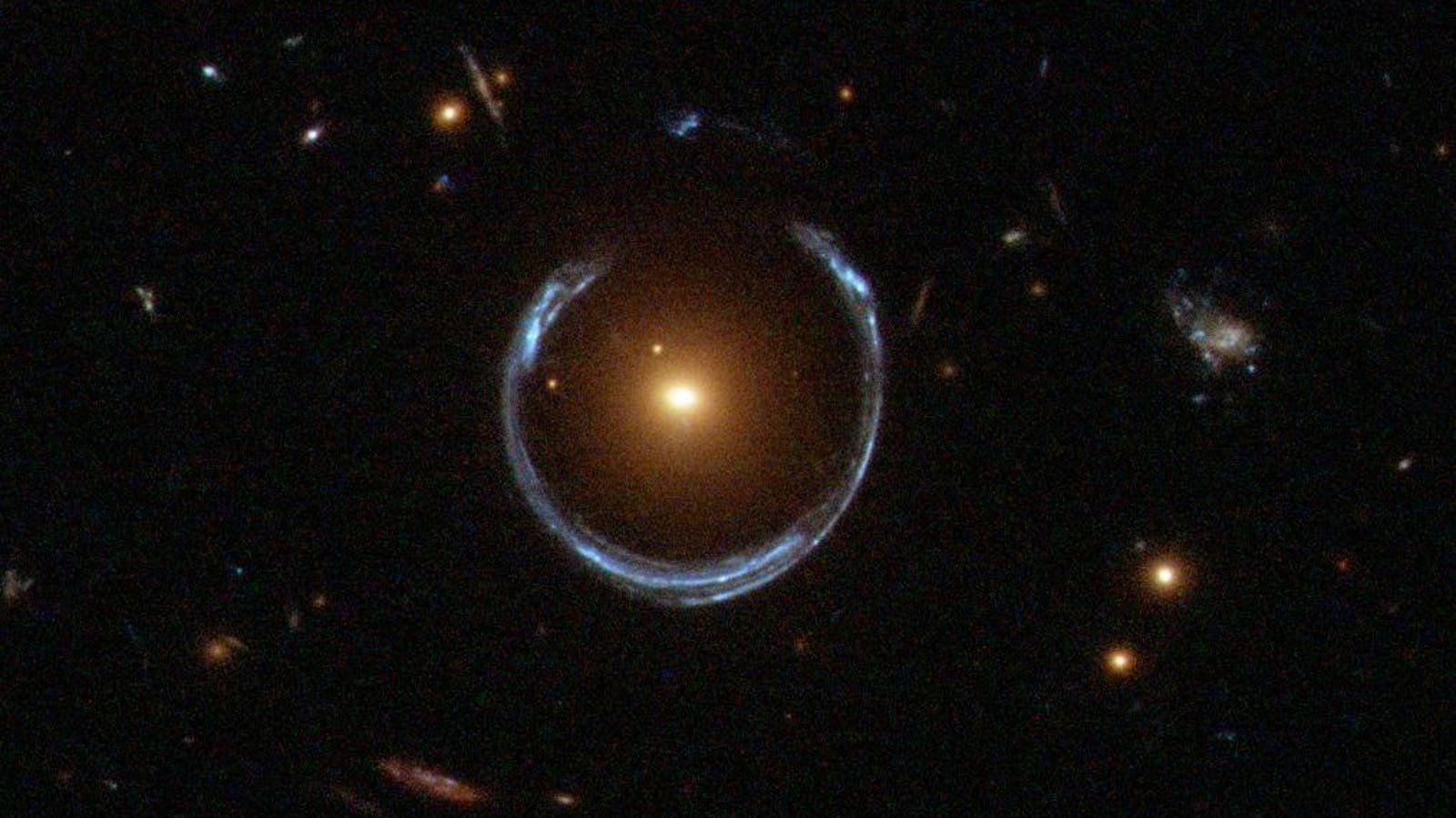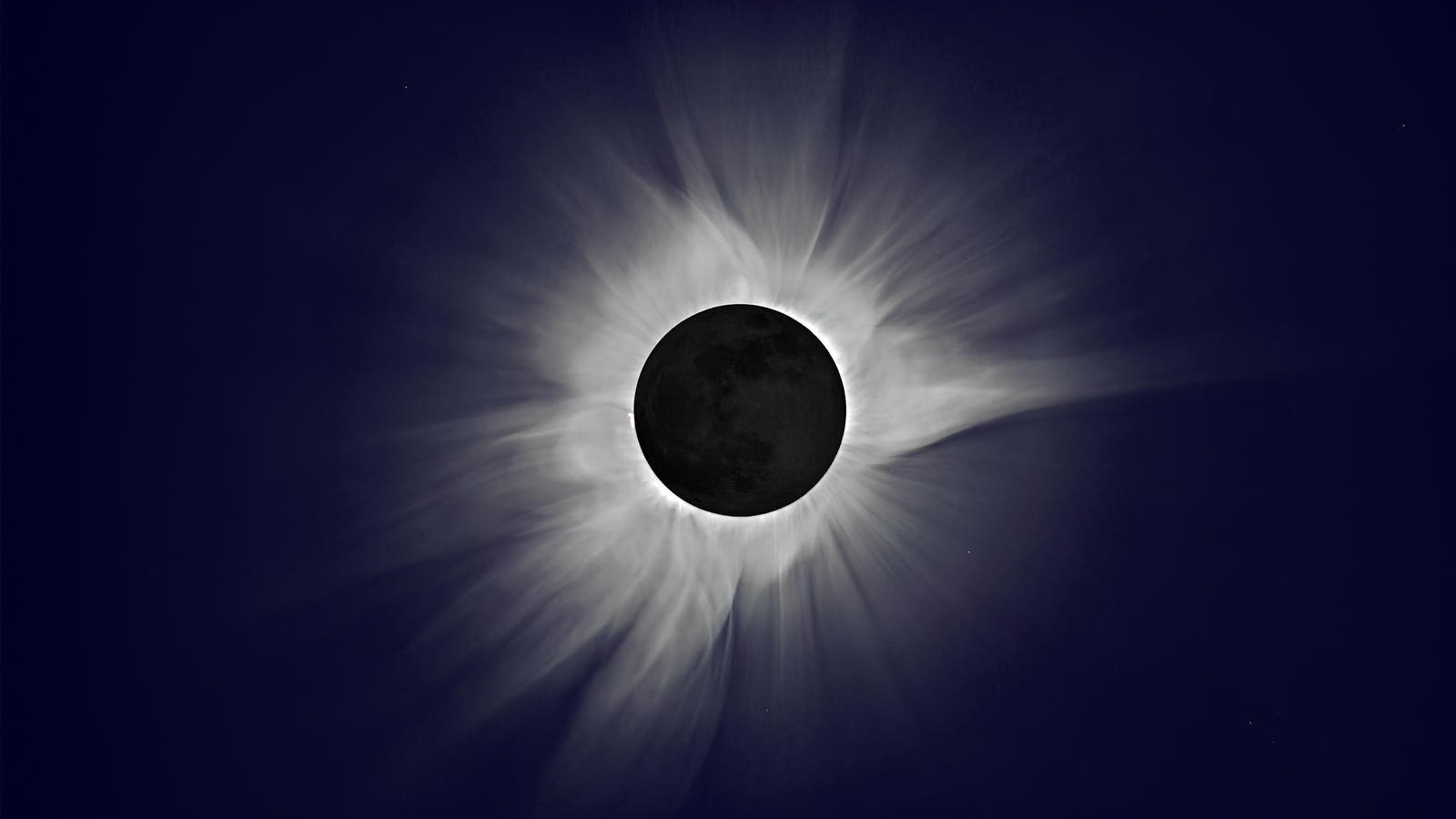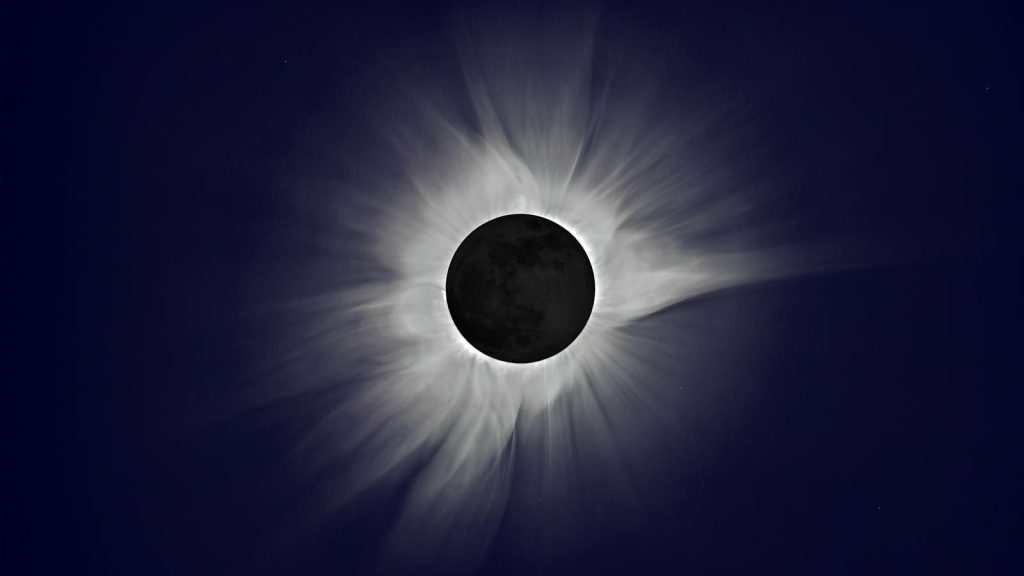Topline
Astronomers have detected what may be the most massive black hole ever observed. It was found within what’s known as the Cosmic Horseshoe galaxy — one of the most massive galaxies known — which is so large it distorts spacetime into a near-ring of light.
The Cosmic Horseshoe gravitational lens. The newly discovered ultramassive blackhole lies at the centre of the orange galaxy. Far behind it is a blue galaxy that is being warped into the horseshoe shaped ring by distortions in spacetime created by the immense mass of the foreground orange galaxy.
NASA/ESA
Key Facts
The newly found black hole is about 36 billion times the mass of the sun. That’s 10,000 times heavier than Sagittarius A*, the black hole at the center of the Milky Way galaxy.
The immense size of the black hole puts it close to the theoretical upper limit of what the universe can sustain.
The black hole exists in the Cosmic Horseshoe galaxy, which is so big it distorts spacetime and warps the passing light of a background galaxy into a giant horseshoe-shaped Einstein ring. It’s about five billion light-years distant.
Despite its size, the massive back hole appears to be dormant. It was detected because of its immense gravitational pull on the stars around it.
Every galaxy in the universe has a supermassive black hole at its center, with larger galaxies having larger ultra-massive black holes, scientists think.
What Is The Cosmic Horseshoe Galaxy?
One of the most massive galaxies ever recorded, the Cosmic Horeshoe was originally discovered in 2007 using data from the Sloan Digital Sky Survey in New Mexico. Later imaged by NASA’s Hubble Space Telescope, it’s about 10 times the mass of the Milky Way, according to NASA.
The Cosmic Horseshoe is a classic example of an Einstein Ring, whereby the bending of spacetime by mass — as predicted by Albert Einstein — a foreground galaxy acts as a lens to magnify a background galaxy. The alignment needs to be exact, making them rare. In the image of the Cosmic Horseshoe, the blue horseshoe shape is a distant galaxy, and the red galaxy is in the foreground. It’s the blue horseshoe galaxy that’s of most interest to astronomers because it’s older, in this case forming about three billion years after the Big Bang, which is thought to have created the universe 13.7 billion years ago.
How The Biggest-Ever Black Hole Was Found
As well as gravitational lensing, the black hole within the Cosmic Horseshoe was detected by studying how, and how fast, stars in the galaxy move around black holes. The findings have been published in a paper in the Monthly Notices of the Royal Astronomical Society in the U.K.
“We detected the effect of the black hole in two ways — it is altering the path that light takes as it travels past the black hole and it is causing the stars in the inner regions of its host galaxy to move extremely quickly,” said Professor Thomas Collett, a researchers at the University of Portsmouth in the U.K. and one of the co-authors of the paper. The stars in question are moving at almost 400 kilometers per second.
The Cosmic Horseshoe is thought to be a “fossil group” of ancient galaxies that have merged together. “It is likely that all of the supermassive black holes that were originally in the companion galaxies have also now merged to form the ultra-massive black hole that we have detected,” said Collett. “So we’re seeing the end state of galaxy formation and the end state of black hole formation.”
Further reading
ForbesDon’t Miss Friday’s Six-Planet ‘Parade’ — Here’s How To WatchBy Jamie CarterForbesSee The Six-Planet Parade Peak As ‘Black Moon’ Arrives: The Night Sky This WeekBy Jamie CarterForbesNorthern Lights Update: Aurora Alert For Monday Night In 16 StatesBy Jamie Carter











